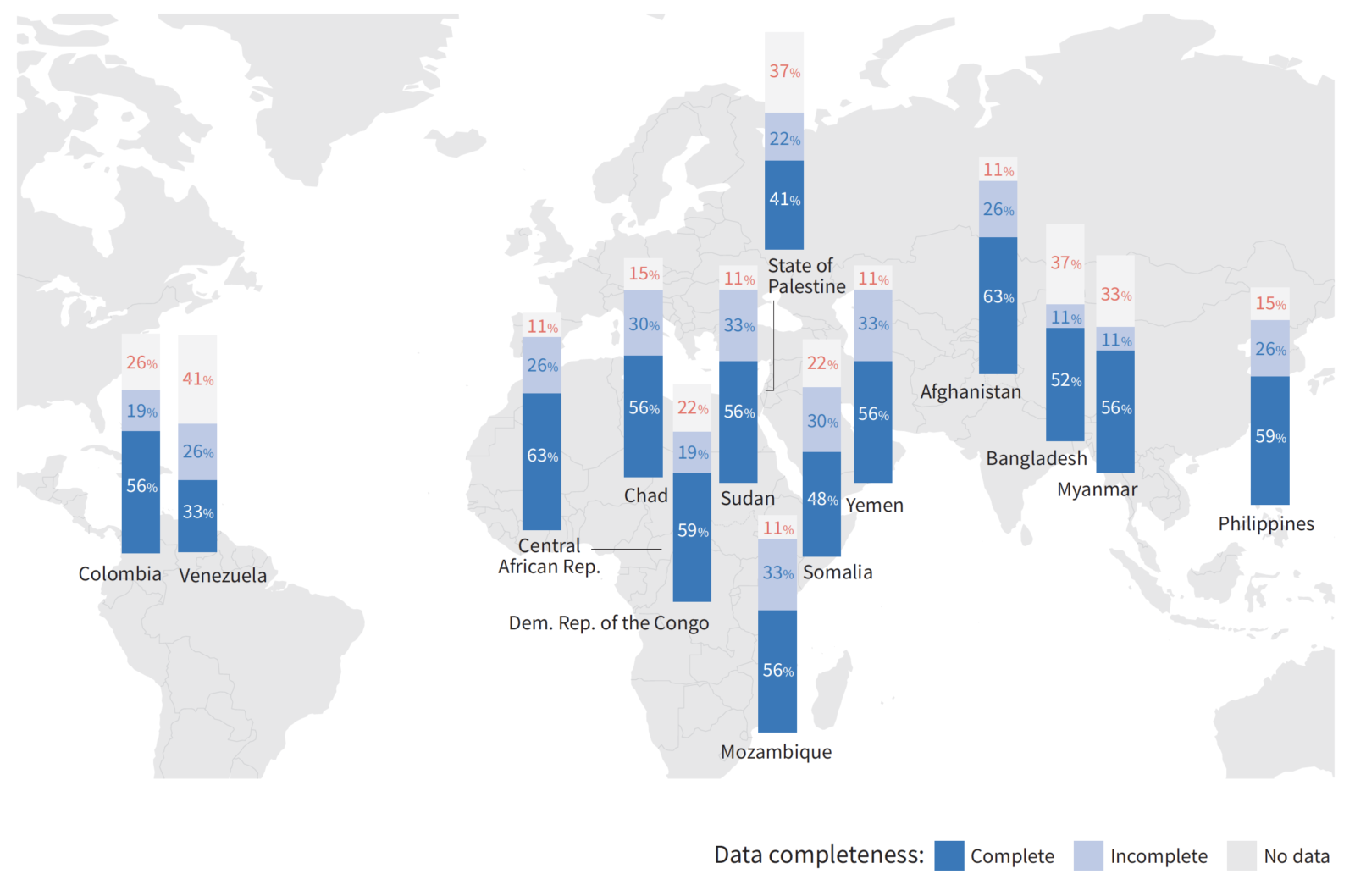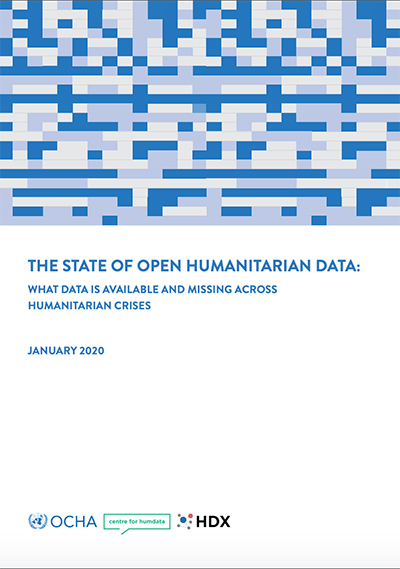A new report from the Centre for Humanitarian Data aims to increase awareness of data that is available and missing across humanitarian operations.
The State of Open Humanitarian Data is based on the data shared by dozens of partners through the Humanitarian Data Exchange (HDX) platform as measured through the Data Grid, a feature that prioritizes core data into six categories.
As we start 2020, just over 50 percent of relevant crisis data is available across 14 humanitarian operations. Afghanistan and the Central African Republic have the most complete data, while Venezuela has the least. The largest data gaps are in the categories for health and education, and food security and nutrition. The categories with the best coverage of data include affected people, and geography and infrastructure.

The boundaries and names shown and the designations used on this map do not imply official endorsement or acceptance by the United Nations. Centre for Humanitarian Data
When HDX was launched in 2014, it held around 800 datasets. Over the past five years, that number has skyrocketed to over 17,000 datasets. The data covers every active humanitarian crisis, from Afghanistan to Yemen, and has been shared by dozens of organizations, from ACLED to WFP. In 2019, HDX was accessed by over 600,000 users.
This is a tremendous achievement for collective action in a sector that relies on cooperation.It also shows the value of an open data platform. OCHA’s work to aggregate data from many sources in one place has undoubtedly created efficiency in the system. Humanitarians, donors, academics, and journalists no longer need to chase contacts to locate data; they can go to HDX and search for it. If the data is not there, the HDX team will help find it.
One downside to all of this data sharing is knowing what data is most relevant to understanding a crisis context. In May 2019, HDX added a new feature called the Data Grid to help people in their quest for good and relevant data. Based on extensive user research, the Data Grid places the most important crisis data into six categories: affected people; coordination and context; food security and nutrition; geography and infrastructure; health and education; and population and socio-economy. Within each category, there are several sub-categories, with a total of 27 sub-categories altogether.
CONTINUE READING AT centre.humdata.org.

